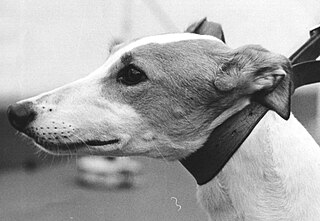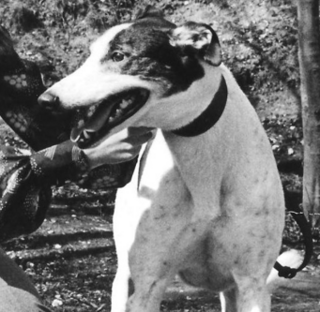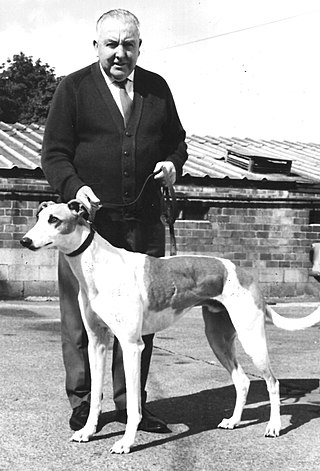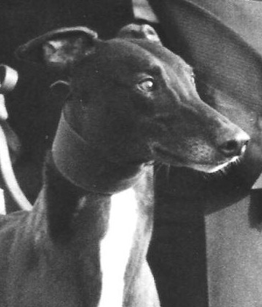 | |
| Location | Edinburgh, Scotland |
|---|---|
| Coordinates | 55°55′45.149″N3°15′16.135″W / 55.92920806°N 3.25448194°W |
| Opened | 1927 |
| Closed | 1951 |
| Tenants | |
| Greyhound racing, trotting races | |
Stenhouse Stadium was a greyhound racing track and trotting track in Edinburgh. [1]
 | |
| Location | Edinburgh, Scotland |
|---|---|
| Coordinates | 55°55′45.149″N3°15′16.135″W / 55.92920806°N 3.25448194°W |
| Opened | 1927 |
| Closed | 1951 |
| Tenants | |
| Greyhound racing, trotting races | |
Stenhouse Stadium was a greyhound racing track and trotting track in Edinburgh. [1]
Edinburgh did not rival Glasgow in terms of greyhound racing popularity but still hosted four tracks in the 1930s. Powderhall Stadium which opened in 1927 was the largest, the Royal Gymnasium Greyhound Track, Marine Gardens and Stenhouse all started in 1932. [2]
Built on the west side of the curvature of the Water of Leith the location of the track was in the south-west of Edinburgh and on the south side of the Gorgie Road which served as the main tramway for the immediate area referred to as Gorgie. It was just to the west of the recently built HM Prison Edinburgh sometimes referred to as Saughton or Stenhouse Prison and some of the prison cottages for the staff ran along the back of the greyhound track's west stand. The area was largely rural and was known as Saughton Mills before the building of the prison and housing that forms Stenhouse today. The track was built on top of a football ground that had hosted the Civil Service Strollers from 1908. [3]

On 25 June 1932 the stadium opened to greyhound racing. [4] The first meeting (a Saturday afternoon) attracting 10,000 spectators witnessing seven races and betting on the new electric tote in one shilling units. The first recorded winner was Rebuke who won the Stenhouse Stakes in 31.80 secs over 525 yards, the 500 yard handicap races on the same afternoon saw slower winners times than the 525 yard events. A second meeting was held on the same evening of the first with another 10,000 spectators witnessing seven more races. The track was 440 yards in circumference and included two covered enclosures and a grandstand. Pony trotting also took place at the stadium on the opening day and would be a popular pastime at the venue. [5]
The track originally raced under British Greyhound Track Control Society (BGTCS) rules and was subject to prosecution in December 1933 following the use of a totalisator during the controversial period of government tote bans. In a surprise move in November 1935 the Greyhound Racing Association (GRA) made a successful bid to the Stenhouse directors and acquired the stadium. [6] Alternative offers had been received by two English companies but the third GRA bid was higher and sealed the deal. The move came as a surprise because the GRA already owned Powderhall and the resident kennels were moved to the Powderhall stadium to form one base which was the normal routine for the GRA. [7]
In 1938 the oldest building in the area known as Stenhouse Mansion was given to the National Trust for Scotland by the Greyhound Racing Association; the building had come into their possession as part of the 1935 purchase.
The reasons for closure and exact dates of the closure are uncertain. It is a clear that the GRA prioritised Powderhall and there are reports that some of the racing equipment was moved to Powderhall. Tote returns for 1950 were declared but the track is not listed in the 1951 tote returns or any year afterwards meaning that the closing date was during the early part of 1951. [8]
The stadium itself remained and was renamed the Stenhouse Racing Stadium where trotting races continued with show jumping also prominent. The stadium continued to be used by various sports over the years until it was finally demolished and is now industrial units. The Stenhouse Mansion remains.
| Distance yards | Greyhound | Time | Date |
|---|---|---|---|
| 525 | S.L.D | 29.65 | 4 September 1934 |

White City Greyhounds was the greyhound racing operation held at White City Stadium in London. The venue was regarded as the sport's primary track during its existence.

Powderhall Stadium, formerly the Powderhall Grounds, was a multi-sports facility overlooking the Water of Leith on Beaverhall Road, in the Powderhall (Broughton) area of northern Edinburgh, Scotland. It opened in January 1870 at the height of professional pedestrianism and was modelled on the stadium at Stamford Bridge in London. It hosted professional sprint races, track and field athletics, including the Scottish Amateur Athletics Championships on a number of occasions, professional football, international rugby, cycling, and dog races as well as boxing, quoits and pigeon shooting. For 100 years it hosted the Powderhall Sprint, the most famous professional sprint handicap in the world. With the decline of pedestrianism as a spectator sport in the 1920s it was converted to a greyhound stadium, hosting the Scottish Grand National for over sixty five years, and it also hosted professional speedway. The stadium finally closed in 1995 and the site is now a housing estate.
The Marine Gardens was an entertainment complex located in the Portobello area of Edinburgh, Scotland. Opened in 1909 as a pleasure garden and amusement park on the shores of the Firth of Forth, most of its original attractions apart from the ballroom were removed following military use of the site during the First World War. The complex also included a stadium which was used during the interwar period for football, greyhound racing and speedway. It was the home venue of Scottish Football League teams Leith Athletic (1928–1936) and Edinburgh City. The Marine Gardens closed down permanently in 1939 after again being taken over by the military, with the area being redeveloped after the Second World War.
White City Stadium (Nottingham) was a greyhound racing and motorcycle speedway stadium in Trent Lane, Nottingham.
White City Stadium (Newcastle) was a greyhound racing stadium near Scotswood Bridge in Blaydon on Tyne, County Durham.
Exeter Greyhound Stadium, also known as the Marsh Barton Stadium, was a greyhound racing stadium in Marsh Barton, Exeter.
The 1932 UK & Ireland Greyhound Racing Year was the seventh year of greyhound racing in the United Kingdom and Ireland. The total annual attendance across the country for 1932 topped 20 million, increasing to 20,178,260 from 17,906,917, a sixth consecutive annual increase.
The 1933 UK & Ireland Greyhound Racing Year was the eighth year of greyhound racing in the United Kingdom and Ireland.
The 1935 UK & Ireland Greyhound Racing Year was the tenth year of greyhound racing in the United Kingdom and Ireland.
The 1938 UK & Ireland Greyhound Racing Year was the 13th year of greyhound racing in the United Kingdom and Ireland.
The 1957 UK & Ireland Greyhound Racing Year was the 31st year of greyhound racing in the United Kingdom and Ireland.
The 1958 UK & Ireland Greyhound Racing Year was the 32nd year of greyhound racing in the United Kingdom and Ireland.

The 1968 UK & Ireland Greyhound Racing Year was the 42nd year of greyhound racing in the United Kingdom and Ireland.

The 1970 UK & Ireland Greyhound Racing Year was the 44th year of greyhound racing in the United Kingdom and Ireland.

The 1971 UK & Ireland Greyhound Racing Year was the 45th year of greyhound racing in the United Kingdom and Ireland.

The 1973 UK & Ireland Greyhound Racing Year was the 47th year of greyhound racing in the United Kingdom and Ireland.
The 1981 UK & Ireland Greyhound Racing Year was the 55th year of greyhound racing in the United Kingdom and Ireland.

The 1982 UK & Ireland Greyhound Racing Year was the 56th year of greyhound racing in the United Kingdom and Ireland.

The 1986 UK & Ireland Greyhound Racing Year was the 60th year of greyhound racing in the United Kingdom and Ireland.

The 1987 UK & Ireland Greyhound Racing Year was the 61st year of greyhound racing in the United Kingdom and Ireland.